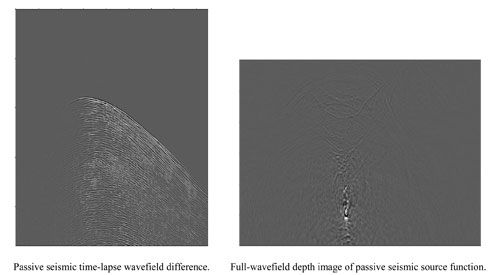Wave-Theoretic Imaging and Inversion of Time-Lapse Seismic Wavefields
By:
David Lumley
University of Western Australia
| When: | Tuesday, October 1, 2013, 9:30 a.m. |
| Where: | Seminar Conference Room, 10100 Burnet Road, Bldg 196-ROC, Austin, Texas 78758 |
| Hosts: | Craig Fulthorpe and Peter Flemings, UTIG |
Click for a Live Broadcast.

Abstract
Time-lapse seismic monitoring of reservoir fluid flow and other time-variant subsurface phenomena can
be achieved with active and/or passive source seismology. Conventionally, active-source 4D seismic
monitoring of reservoir production changes in saturation, pressure, and geomechanical effects is
conventionally done via prestack time migration analysis of the time-lapse wavefields. Instead, we
present new developments that demonstrate the benefits of using the full time-lapse wavefields more
accurately, for example via 4D prestack depth migration (4D PSDM), 4D wave-equation migration
velocity analysis (4D WEMVA) and 4D full waveform inversion (4D FWI). These new developments
provide an opportunity for more accurate imaging of complex scattered 4D wavefields, and also the
possibility to monitor very weak signals using 4D coda waves such as in gas depletion reservoirs.
Passive monitoring of natural or induced seismicity in the subsurface typically involves seismic data recorded from a few sparse sensor locations, picked event arrival times, and triangulation to determine microseismic event source locations. This conventional approach to passive seismic monitoring has remained relatively unchanged for the past 100 years. Instead, we present new developments that demonstrate an opportunity for significant improvements in passive seismic imaging and monitoring by using large dense (possibly permanent) buried receiver arrays that record the full induced seismicity wavefields, and by using full wavefield imaging techniques applied to passive array seismic data and ambient noise fields.




